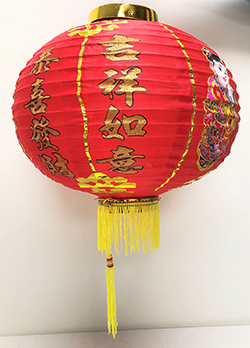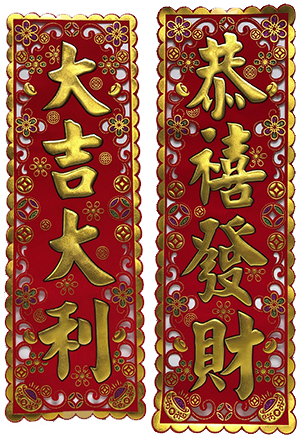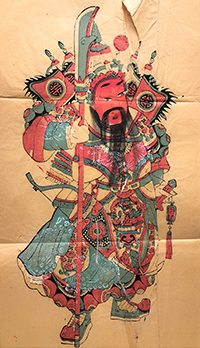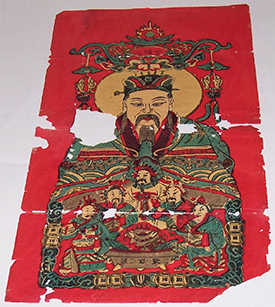China: Celebrate the New Year
The History of Chinese New Year
Chinese New Year, also known as Lunar New Year or Spring Festival, is China’s most important festival. It is also the most important celebration for families and includes a week, called the Little New Year, of official holiday. The history of the Chinese New Year festival can be traced back to about 3,500 years ago.
When is Chinese New Year?
The date of the Chinese New Year is determined by the lunar calendar. The holiday falls on the second new moon after the winter solstice on December 21. The dates usually range sometime between January 21 and February 20.
Why is it called the Spring Festival?
Even though it is winter, the Chinese New Year is popularly known as the Spring Festival because it marks the end of winter and the beginning of spring.
Chinese New Year’s Celebrations
The 2021 celebration of Chinese New Year begins the Year of the Ox on February 4 with the Little New Year. It will continue until February 11, which is New Year’s Eve. It is during this time that the national holiday begins. People return to their hometowns and households start to prepare for the celebration.
New Year’s Eve is normally when the biggest celebration takes place: households gather for the New Year’s feast, family worship, and entertainments.

Red lanterns are a common part of Chinese New Year celebrations.
February 12 is the start of a new lunar year and the beginning of the Spring Festival. The celebration reaches its culmination with the Lantern Festival on February 23. On this day every household will light lanterns in the hope of having good luck in the New Year.
Over the 23 days of the festival many traditions are the same throughout the country, but different regions have various ways of celebrating. Here are the New Year’s traditions of four Chinese students at Wake Forest and their families.
Beijing:
Li and her family live in Beijing, the capital of China. On New Year’s Eve, her family purchases a whole lamb for dinner. When dinner is served each family member gets a share of the lamb. They will also make dumplings; sometimes stuffing them with coins or sweets as symbols of good luck.

New Year’s greetings
Elders, who are interested in calligraphy, will write Fu (New Year’s greetings) and poetic sayings on red papers that are posted on the front door.
For entertainment, her family plays board games like Chinese chess and Mahjong.
The most popular gift of the Spring Festival is the red envelope. It is a packet made of red paper with prosperous words written on it. On New Year’s Eve, parents give these envelops (filled with money) to their children to wish them good luck in the next year.
Jinan:
He comes from Jinan, Shandong, in northern China. Visiting graves is the beginning of the He family’s celebrations. This is a traditional method of ancestor worship, where they bring joss money, gifts, and foods to their ancestor’s tombs.
The family also eats dumplings during the festival, but they don’t stuff them with lucky gifts. Instead of lamb, the He family prepares pork head meat, fennel beans, and fish for the last dinner of the year.

A door god from the Lam Museum collection.
Similar to those in Beijing, they post Fu and other sayings on the front door. In this area, some families will also post door gods on the front door to keep the household protected.
Sometimes the family plays chess, but they prefer to play poker games. Also, in the evening, the whole family will gather around the television for the CCTV Spring Festival Gala, the largest TV show of the year.
During the Spring Festival, every family will bring lavish gifts like chicken, ejiao, ginseng, sea cucumbers, and pancakes to neighbors to share their happiness.
Nanjing:
In the eastern city of Nanjing, Jiangsu, ancestor worship still takes place during the festival. But according to Wang, only the elders of her family still visit their ancestor’s graves.
In Nanjing, families prefers spring rolls stuffed with leeks and silk noodles instead of dumplings. Stewed meat is a very popular food for the New Year’s Eve feast. Pork meat is stewed with soy sauces, sugar, and Chinese spices until it becomes soft, and not greasy. No wonder it is so popular!
Wang says that poker games are so popular some people will play them throughout the whole festival.
Hangzhou:

A mid-20th century image of the kitchen god.
The New Year’s celebrations of the Sun family in the southern city of Hangzhou begins with a series of religious rituals. It starts with grave visits similar to those in Shandong, then continues with in-house worshipping of the kitchen god, and ends with worshiping Buddha either at a home altar or in the local temple.
Similar to Nanjing, people in Hangzhou prefer spring rolls over dumplings. However, their spring rolls are stuffed with smashed red beans, pork, tofu, and shrimp.
Like other regions, families in Hangzhou post Fu, other greetings, and door gods. During the night, each family will light a red lantern as a symbol of good luck.
You can learn more about Chinese New Year here and here.
Let’s make a Red Envelope!
A red envelope is always a popular Chinese New Year gift. It is made of red paper (the color of good luck) with written or printed words like “Gong xi fa cai” (hope you be rich) and “Gong he xin xi” (happy new year) on it.

Click here if you want to learn more about red envelopes.
You will need:
• Red envelope template Download the template here
• Red cardstock or heavy construction paper
• Scissors
• Glue
• Crayons, markers, or colored pencils
• OPTIONAL: glitter, glitter glue, glitter pens, stickers
Steps:
- Using the red envelope template, print on red cardstock or heavy construction paper.
- Cut out the envelope along the outside lines.
- Fold along the inside lines and then unfold.
- Fold Flap A.
- Apply glue to Flap B and glue to Flap A.
- Fold up Flap C and glue in place.
- Leave the last flap open.
- Decorate your envelopes.
Here’s a YouTube video showing how to make a red envelope.
Li, Sun, He, and Wang, Chinese international students at Wake Forest University, contributed to this post.
